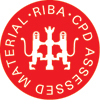This programme will be of benefit to architects, structural engineers, project managers and construction specialists who wish to understand how concrete can be used on walls, columns, slabs and ceilings as a specified architectural finish.
Using many examples on which he has advised, including the Stirling Prize-winning Sainsbury Laboratory, concrete expert David Bennett of David Bennett Associates talks us through the essentials including how to draw up a specification and how to ensure that the desired finish is achieved.
The programme is enriched by David’s very forthright views and anecdotes picked up during many years’ experience working with some of the UK’s most demanding architects.
Key learning points:
- Why use concrete as an architectural finish?
- What governs the colour of a concrete?
- What is PFA and GGBS and how do they influence the finish?
- Good practice; what architects should look out for on site during construction
- Curing time: when and how to strike
- What defects should architects look for and how ‘perfect’ can concrete be?
About the contributor
David Bennett BSc MSc Ceng MICE, of David Bennett Associates, is a consultant, author and lecturer on the use and application of all forms of insitu and precast architectural concrete. He runs CPDs and Short Courses on Architectural Concrete, advises architects and contractors on fine concrete finishes and specification writing, and since drafting the new book Sustainable Concrete Architecture (published by RIBA Publishing); he can advise professionals on how to audit all the C02 emissions in the construction of a building.
He has a keen interest in innovation and new technology and is the author of a number of published books which include Skyscraper; The Architecture of Bridge Design and Concrete; Exploring Concrete Architecture and The Art of Precast Concrete; Architectural Insitu Concrete; and the series Concrete Elegance published by RIBA Publishing.

 Disclaimer: NBS TV programmes are the intellectual property of RIBA Enterprises and it shall be a breach of this right to copy, or in any way exploit commercially or show in public any of the programmes without the express permission of RIBA Enterprises.
Disclaimer: NBS TV programmes are the intellectual property of RIBA Enterprises and it shall be a breach of this right to copy, or in any way exploit commercially or show in public any of the programmes without the express permission of RIBA Enterprises.
